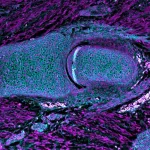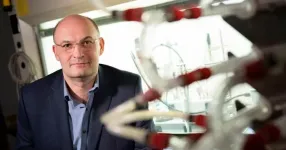(Press-News.org) WASHINGTON—The Society for Cardiovascular Angiography & Interventions (SCAI) has published an expert consensus statement that provides interventional cardiologists, cardiothoracic surgeons, and heart teams with practical guidance for selecting patients and performing alternative access transaortic valve replacement (TAVR).
TAVR has seen substantial growth over the past decade, becoming a standard of care for many patients with asymptomatic aortic stenosis. However, some patients face challenges due to inadequate femoral vascular access. The new guidelines address this gap by recommending alternative access techniques that are safer and more effective.
"While devices have improved, there remains a need for robust techniques to provide TAVR to patients without adequate femoral access. Our guidelines focus on the safest and most effective alternative access methods based on observational evidence,” said Matthew W. Sherwood, MD, MHS, FSCAI, cochair of SCAI’s Structural Heart Disease Council and system director of interventional cardiology at Inova Schar Heart and Vascular Institute. “The guidelines are particularly beneficial for older, sicker patients with significant vascular disease. These high-risk patients often face complications during TAVR procedures. By standardizing alternative access techniques, we aim to improve outcomes and expand treatment options for these patients.”
Published in JSCAI, “SCAI Expert Consensus Statement on Alternative Access for Transcatheter Aortic Valve Replacement” highlights two preferred alternative access techniques: transcarotid and transcaval access. These methods are favored over others, such as transaxillary access, due to their lower associated stroke risk and better overall outcomes. The guidelines discourage the use of older techniques like transapical or direct aortic access. The document also highlights the advancements in device technology and imaging guidance that have contributed to improving the safety and efficacy of alternative access TAVR.
"With this expert consensus document, we aim to help clinicians better care for their patients by providing guidance on the safest and most efficacious routes for alternative access to TAVR. This is crucial as the TAVR population continues to grow," said Paul D. Mahoney, MD, FSCAI, a member of the SCAI Structural Heat Disease Council and Section Chief, Interventional Cardiology and Director of Structural Heart Programs, East Carolina University Brody School of Medicine. “TAVR as a field is maturing from a novel procedure to a standard of care. The goal is to help busy clinicians identify best clinical practices and achieve the best outcomes for their patients."
The guidelines call for better standardization and focus on alternative access techniques at individual sites, such as the use of proctors to gain expertise. The guidelines emphasize the need for further research and standardization, as more data is needed to fully understand the risks and benefits of TAVR alternative access techniques. The guidelines also call for the exploration of newer techniques, such as intravascular lithotripsy, to further improve patient outcomes.
"There is still a lot we don't know, and we want to ensure that we provide the best care for our patients by continuing to study and improve these techniques," Dr. Sherwood said.
About SCAI
The Society for Cardiovascular Angiography and Interventions is a professional organization representing more than 4,000 invasive and interventional cardiology professionals in approximately 75 nations. SCAI's mission is to promote excellence in invasive/interventional cardiovascular medicine through physician education and representation, and advancement of quality standards to enhance patient care.
END
SCAI publishes expert consensus on alternative access for transaortic valve replacement (TAVR)
Provides interventional cardiologists, cardiothoracic surgeons, and heart teams with practical guidance for selecting patients and performing alternative access transaortic valve replacement (TAVR)
2025-02-25
ELSE PRESS RELEASES FROM THIS DATE:
Humans inherited their flexible joints from the earliest jawed fish
2025-02-25
The efficient architecture of our joints, which allows our skeletons to be flexible and sturdy, originated among our most ancient jawed fish ancestors, according to a study published February 25th in the open-access journal PLOS Biology by Neelima Sharma of the University of Chicago and colleagues.
Synovial joints are a key feature of most vertebrate skeletons, providing more mobility and stability compared to other joint types. A synovial joint allows bones or cartilage to slide past each other with the aid of a lubricated cavity between them. These joints are present in land vertebrates and bony fish, suggesting this feature had evolved in the common ancestors of these groups, but ...
Understanding the world within: Study reveals new insights into phage–bacteria interactions in the gut microbiome
2025-02-25
A world of microbes resides within the gut of every human being. This vast microbial community, the microbiome, which includes bacteria and viruses, has repeatedly demonstrated its ability to actively contribute to both health and disease.
Researchers have learned a good deal about the bacterial communities that live in the human gut. For instance, they have discovered that these bacteria extensively metabolize the food we eat, drive normal development of the immune system and, to our detriment, include some opportunistic microorganisms that can cause disease under certain conditions.
On the other hand, the contributions of viruses in the gut microbiome ...
Cold treatment does not appear to protect preterm infants from disability or death caused by oxygen loss, according to NIH-funded study
2025-02-25
WHAT:
Lowering the body temperature of preterm infants (born at 33 to 35 weeks of pregnancy) with hypoxic ischemic encephalopathy (HIE)—a type of brain damage caused by oxygen loss—offers no benefits over standard care, according to a study funded by the National Institutes of Health (NIH). Previous studies of near-term and term infants (born after 36 weeks) with HIE found that this cooling treatment, which lowers body temperature to about 92 degrees Fahrenheit, significantly reduced the risk of death or disability by age 18 months (corrected for prematurity). However, the current findings show ...
Pennington Biomedical researchers uncover role of hormone in influencing brain reward pathway and food preferences
2025-02-25
BATON ROUGE – When faced with multiple food options and ultimately choosing one, the factors of that decision-making process may be more physiological than previously assumed. A group of scientists led by Pennington Biomedical Research Center’s Dr. Christopher Morrison recently discovered that the hormone fibroblast growth factor 21, or FGF21, plays an influential role in brain reward mechanisms like those involved in dietary choices.
The discovery was announced in the research team’s recent paper titled “FGF21 ...
Rethinking equity in electric vehicle infrastructure
2025-02-25
As electric vehicles (EVs) gain momentum in the fight against climate change, the conversation around public charging infrastructure is growing increasingly complex. Xinwu Qian , assistant professor of civil and environmental engineering at Rice University, is spearheading research that reimagines how and where charging stations should be deployed — ensuring that alignment with people’s daily routine and activities, beyond mere accessibility, are at the forefront.
“Charging an electric vehicle isn’t just about plugging it in and waiting — it takes 30 minutes to an hour even with the fastest charger ...
Lunar Trailblazer blasts off to map water on the moon
2025-02-25
On Wednesday 26 February, a thermal imaging camera built by researchers at the University of Oxford’s Department of Physics will blast off to the Moon as part of NASA’s Lunar Trailblazer mission. This aims to map sources of water on the Moon to shed light on the lunar water cycle and to guide future robotic and human missions.
Once in orbit, the spacecraft – weighing 200kg and about the size of a washing machine- will map the surface temperature and composition of the ...
Beacon Technology Solutions, Illinois Tech awarded grant to advance far-UVC disinfection research
2025-02-25
CHICAGO—February 24, 2025—Beacon Technology Solutions (Beacon), with collaborators at Illinois Institute of Technology (Illinois Tech), has been awarded a grant to support a novel study on how Far-UVC technology can help mitigate the spread of infectious diseases in public spaces. The grant was awarded through the Illinois Innovation Vouchers (IIV) Program, which fosters research collaborations between small- and medium-sized enterprises and Illinois’ world-class universities.
Beacon’s flagship product is a wall-mounted smart disinfection device that uses Far-UVC 222nm light, which has been shown to disinfect up to 99.99 percent ...
University of Houston researchers paving the way for new era in medical imaging
2025-02-25
New technology developed by researchers at the University of Houston could revolutionize medical imaging and lead to faster, more precise and more cost-effective alternatives to traditional diagnostic methods.
For years, doctors have relied on conventional 2D X-rays to diagnose common bone fractures, but small breaks or soft tissue damage like cancers often go undetected. More expensive and time-consuming MRI scans are not always suitable for these tasks in these detection or screening settings. Now, Mini Das, Moores professor at UH’s College of Natural Sciences and Mathematics and Cullen College ...
High-tech startup CrySyst provides quality-by-control solutions for pharmaceutical, fine chemical industries
2025-02-25
WEST LAFAYETTE, Ind. — International process systems and operation experts have launched high-tech startup Crystallization Systems Technology Inc. (CrySyst) to streamline processes used by companies in the pharmaceutical and fine chemical industries.
CrySyst’s quality-by-control (QbC) framework addresses crystallization monitoring, modeling and control. The framework is based on research published in the April 15, 2020, and Oct. 5, 2021, issues of the journal Crystal Growth & Design and the Sept. 22, 2022, issue of the journal Industrial & Engineering ...
From scraps to sips: Everyday biomass produces drinking water from thin air
2025-02-25
Discarded food scraps, stray branches, seashells and many other natural materials are key ingredients in a new system that can pull drinkable water out of thin air developed by researchers from The University of Texas at Austin.
This new “molecularly functionalized biomass hydrogels” system can convert a wide range of natural products into sorbents, materials that absorb liquids. By combining these sorbents with mild heat, the researchers can harvest gallons of drinkable water out of the atmosphere, even in dry conditions.
“With ...
LAST 30 PRESS RELEASES:
New study shows how the spleen helps the immune system accept a transplant
New Mayo Clinic study advances personalized prostate cancer education with an EHR-integrated AI agent
Researchers identify novel therapeutic target to improve recovery after nerve injury
Microbes in breast milk help populate infant gut microbiomes
Reprogramming immunity to rewrite the story of Type 1 diabetes
New tool narrows the search for ideal material structures
Artificial saliva containing sugarcane protein helps protect the teeth of patients with head and neck cancer
Understanding the role of linear ubiquitination in T-tubule biogenesis
Researchers identify urban atmosphere as primary reservoir of microplastics
World’s oldest arrow poison – 60,000-year-old traces reveal early advanced hunting techniques
Bristol scientists discover early sponges were soft
New study uncovers how rice viruses manipulate plant defenses to protect insect vectors
NSF–DOE Vera C. Rubin Observatory spots record-breaking asteroid in pre-survey observations
Ribosomal engineering creates “super-probiotic” bacteria
This self-powered eye tracker harnesses energy from blinking and is as comfortable as everyday glasses
Adverse prenatal exposures linked to higher rates of mental health issues, brain changes in adolescents
Restoring mitochondria shows promise for treating chronic nerve pain
Nature study identifies a molecular switch that controls transitions between single-celled and multicellular forms
USU chemists' CRISPR discovery could lead to single diagnostic test for COVID, flu, RSV
Early hominins from Morocco reveal an African lineage near the root of Homo sapiens
Small chimps, big risks: What chimps show us about our own behavior
We finally know how the most common types of planets are created
Thirty-year risk of cardiovascular disease among healthy women according to clinical thresholds of lipoprotein(a)
Yoga for opioid withdrawal and autonomic regulation
Gene therapy ‘switch’ may offer non-addictive pain relief
Study shows your genes determine how fast your DNA mutates with age
Common brain parasite can infect your immune cells. Here's why that's probably OK
International experts connect infections and aging through cellular senescence
An AI–DFT integrated framework accelerates materials discovery and design
Twist to reshape, shift to transform: Bilayer structure enables multifunctional imaging
[Press-News.org] SCAI publishes expert consensus on alternative access for transaortic valve replacement (TAVR)Provides interventional cardiologists, cardiothoracic surgeons, and heart teams with practical guidance for selecting patients and performing alternative access transaortic valve replacement (TAVR)





